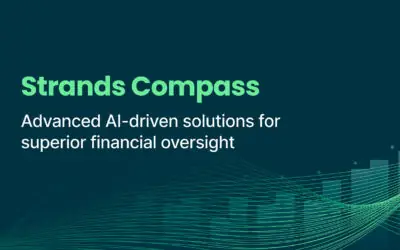The exponential growth of technology is the paradigm that was described by Moore’s Law years ago and is characteristic of the present evolutionary process in technology. How fast this technology becomes reality is difficult to quantify, but a first discussion point may be the business context in which innovation will become preeminent. The banking industry is ripe for disruptive innovation, but it is a fact that there is a gap between the latest financial technology developments and the reality that banking customers are faced with. This makes banking data the epicenter of disruption in the world of finances.
THE EPICENTER OF DISRUPTION
Banks are the tree of knowledge in terms of transactional finances, as they facilitate and therefore witness our financial movements on a daily basis. Since the wave of online Personal Financial Management tools that were launched around 2006, this banking knowledge has been used to show customers their daily activities in a user-friendly way. Customer data drives the success of digital banking and now it is almost impossible to imagine an online banking portal without features like saving goals, budgeting or categorized transactions.
From a technology point of view, it goes even further. Now the market has plenty of digital money management solutions, which are able to give us valued insights. Advanced analytics and machine learning formed the foundation, upon which personalized suggestion functions have completed these tools. Currently the number of implementations of these customer-based technologies is increasing, handled carefully by top Fintech companies.
Under the umbrella of all these innovative tools coming from the Fintech world, banks are forced to join the race too, and offer innovative products to their customers. People now expect a customer-centric approach, where banking success comes from helping clients to manage their money with digital tools.
IS CUSTOMER SUCCESS A DELIVERED OUTCOME?
The reality in implementations is that the market is still considering money management tools as separate activities from online banking. It is difficult to find these digital solutions fully integrated in one online banking offering. Downstream implementations are more common, and to get valuable financial information, the customer is forced either to go to specific tabs inside the online banking portal or to download specific mobile applications.
It is quite incredible that we can now view a whole pool of information at the touch of a few buttons, which typically includes categorized transactions, financial calendars, income and expenses analyses, cash flow forecasts, predictive cash flow movements, and peer comparison.
But this is the key point – all this information is just in front of you. You need to search across the online banking portal to see the same kind of information, as it follows a downstream approach. It is useful to know that you have spent 20% of your monthly income on shopping, for instance. Next month you know that you can try to reduce it, but in frequent cases for many people, they won’t remember this during the following month. From a usability point of view, when the customer receives this information, it is too late.
CUSTOMER-CENTRIC TRENDS
Message of advice may include: “Your cash flow will be negative if you buy these shoes. It is better to wait until next month.” Or “You could open this savings account as you have been cash flow positive for the last two months.” These are suggestions based on banking data that could drive customer success.
Through integrating money management tools as drivers of online banking, the bank has the opportunity to proactively offer financial facilities to customers and help them to manage their money. They can anticipate information based on the customer’s actions. This is the typical upstream approach, where advice messages pop up on the user’s screen before carrying out any financial action. This is just a drop in the ocean of the digital money management tool next generation. And this development may start the envisioning of mobile banking applications from the user’s perspective rather than the bank’s. Daily customer engagement may become the foundation, with banking operations the complementary aspects built on top.
This scenario seems to be far from what we have today, but the reality is that the technology around us is ready and the main banking players already began years ago. If it is not as fast as it should be, this is because for the banks, it is more than a mere technology change; this is also a transformation in the way that they engage customers. This requires many changes in their channels in order to incorporate this paradigm shift.
Nowadays, a very high rate of deals closed in banks are settled within branches, and now the challenge is to keep this rate stable via digital channels. But this task comes with the opportunity for banks to close the circle and become reliable participants, where a win-win situation comes from their daily approach. Maybe from a customer perspective, a more appropriate title would be digital money management revolution.



